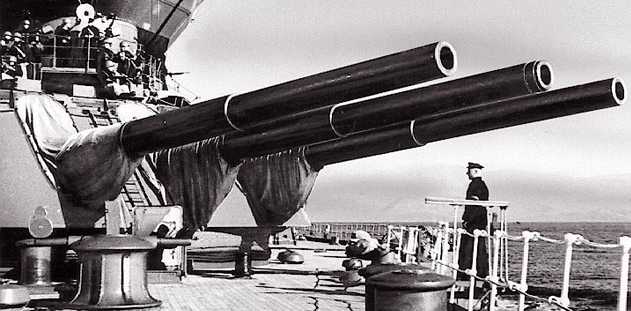These were the most powerful guns ever used on a completed Russian or Soviet warship. They were built to a Russian design and many were also used as coastal artillery and railway guns.
The design of the gun began in 1906 at the Obukhov factory and a prototype was completed in 1907. The Navy initially ordered twenty guns from Obukhov at the end of 1907, with 178 more being ordered in the following years. 126 of these were delivered prior to 1917 (some sources say 144 guns). In 1917-18 an additional 42 guns were delivered, but after that point the Russian Civil War halted production until 1921 when 14 more guns were finished. In 1922 there were 29 guns at the factory at different stages of completion, some of which were subsequently finished. In 1939-40 some guns were converted into a loose liner type.
The battleship turret was designed by the Metal Factory in 1909 and was based on the modernized mountings for the 12"/40 (30.5 cm) gun used on the Andrey Pervozvanny class battleships.
The battleships armed with these guns were known for their excellent shooting during World War I. During her engagement with the German/Turkish battlecruiser Goeben/Yavuz on 8 January 1916, Imperatrica Ekaterina II (which the Germans incorrectly identified as sister-ship Imperatritsa Maria), firing into the sun at a range of about 20,000 meters, landed her first three salvos at 500, 100 and 50 meters short of the Turkish ship. As this distance was outside of her range, Yavuz was forced to run for home, pursued by the Russian dreadnought. Yavuz's commander, Captain Richard Ackermann, later reported that "Imperatritsa Maria [sic] can run and shoot." On 4 April 1916, Imperatrica Ekaterina II straddled and then knocked the stem off the German/Turkish light cruiser Breslau/Midilli at about 21,000 meters.
In addition to the Naval version of the gun, there was also a Coast Defense version which differed in having a larger chamber volume and used different ammunition, although it could also fire the naval rounds. By 1927 all of the coast defense guns had been changed over to using only naval ammunition. These were mainly mounted in twin coastal defense turrets that were designed in 1913. A total of 14 of these coastal defense turrets were built. Single open mountings were also produced for the coastal defense fortresses. There were four four-gun batteries around the Baltic, two four-gun batteries around the Black Sea and two five-gun batteries in the Far East. After the battleship Poltava was damaged by fire in 1924, her turrets were removed and then installed as coast defense batteries, two near Vladivostok in the 1930s and two near Sevastopol in the 1950s. Both batteries were in active service until 1996 and the turrets still survive.
Nomenclature note: This weapon is usually referred to as "Model 1910-1914" in western sources.
Constructed of A tube, two B tubes to the muzzle, two C tubes, two D tubes and jacket. The breech bush screwed into the jacket, locking the parts together, and a collar was shrunk on the breech bush and the end of the collar covered by a small ring with a shoulder. Both collar and ring were placed in position when hot. A Welin breech block was used.
The actual bore diameter was 304.8 mm (12.0").
The history of the battleship Imperator Alexandr III is fragmented with contradictory information found in various sources. The following paragraph is my best effort to piece together her career prior to World War II.
The guns on the battleship Imperator Alexandr III served under several flags. Laid down in 1911, her construction was slow and she was taken over by the Russian Provisional Government prior to completion and renamed Volya (Freedom) on 17 July 1917. Although incomplete, she served in the Black Sea Fleet but saw no combat. At some point between 1917 and 1918, she was taken over by one of the independent Ukranian governments. Upon the collapse of that government, her crew voted to sail her to German-controlled Sevastopol rather than scuttling her, arriving there on 19 June 1918. She was then left with a skeleton crew and guarded by German troops. On 1 October 1918 she was formally taken over by the Germans and was then commissioned into the German Imperial Navy on 15 October 1918, retaining the name Volya, now spelled Wolya in the German alphabet. After the German surrender a short time later, the ship was taken over by the British who subsequently moved her to Izmir, Turkey. On 17 October 1919, she was placed under White Russian control and was renamed General Alekseyev. With the defeat of the White Russians, she was interned by the French at Bizerta, Tunis on 29 December 1920. After the Soviets refused the French offer to return her to their control in 1924, she was subsequently scrapped at Bizerta during the 1930s and her main and secondary 130 mm/55 guns were placed into storage.
In the early part of World War II, France transferred the 305 mm and 130 mm guns to Finland and three Finnish cargo ships departed from Tunis carrying the guns. Two ships with eight 305 mm guns arrived safely in Finland and their cargoes were used for coastal batteries and railroad guns by that nation. But the steamship Nina with her cargo of four 305 mm guns and eighteen 130 mm guns was captured by the Germans in 1940 at Bergen, Norway. The Germans used the 130 mm guns in Norwegian coastal batteries but the 305 mm guns, still aboard Nina, were moved back south to Germany in the summer of 1940. The guns were reconditioned and modified by Krupp and afterwards were redesignated as 30,5 cm K 14 (russ), the "14" meaning 1914, the year the barrels were manufactured. Krupp also built Bettungschiess-Gerüst (BSG) C.40 mountings for them, giving them a maximum elevation of 48 degrees. The guns were then installed as part of the Atlantic Wall defenses at Le Frie Baton, Guernsey Island. Here they were initially and unofficially known as the "Nina Guns" and later formally named Batterie Mirus after Kapitän zur See Rolf Mirus, who was killed in November 1941 near Guernsey Island. This battery was active between late 1942 and 1945 and survived the war, with the guns and mountings being scrapped during the 1950s.
The modifications performed by Krupp allowed these guns to use the same projectiles as used for the German 30.5 cm SK L/50 guns, although the projectiles had modified driving bands. Projectiles so modified were given a "K 14" suffix.
The modified guns had a chamber volume of 13,669 in3 (224.0 dm3), which was slightly smaller than the original Russian chamber volume (see below). According to "Unlage zur M.Dv. Nr. 198," the original propellant charges were 313.1 lbs. (142.0 kg) of RP 38 (1130 x 15/5) & (1130 x 68/60 center tube) for the 892.9 lbs. (405.0 kg) shells and 379.2 lbs. (172.0 kg) of RP 38 (1130 x 15/5) & 1130 x 68/60 center tube) for the 551 lbs. (250 kg) shells. The propellant was divided into two equal charges.
ROF was 1.5 RPM at an elevation of 11 degrees and 1.0 RPM at the maximum elevation of 48 degrees. These ROF figures imply that the guns had some sort of powered loading as well as powered elevation.
A Note on Sources: "Mirus - The making of a Battery" gives the following information: The original MV for the 30.5 cm 892.9 lbs. (405.0 kg) shells was 2,710 fps (825 mps) and for the 551 lbs. (250 kg) shells the MV was 2,800 fps (1,020 mps), giving them a range of 35,000 yards (32,000 m) and 55,770 yards (51,000 m), respectively. However, according to "Unlage zur M.Dv. Nr. 198," the Russian guns had an MV of 2,805 fps (855 mps) for the 892.9 lbs. (405.0 kg) shells and an MV of 3,675 fps (1,120 mps) for the 551 lbs. (250 kg) shells. These MV values are the same as those for the German 30.5 cm SK L/50 guns with these same projectiles. In addition, the ranges given for these MVs in the German guns is close to the ranges given above for the Russian guns. For these reasons, it seems likely that the MV values in "Unlage zur M.Dv. Nr. 198" are actually the original MV values for the Russian guns while the original MV values given in "Mirus - The making of a Battery" are actually the reduced MV values. Whichever source is correct, when the Russian guns were first test fired with the original full charges at maximum elevation, two of the four mountings were badly damaged by the recoil forces. As a result, the MV was reduced and this reduction then gave maximum ranges of 30,620 yards (28,000 m) for the heavier shells (405 kg) and 41,560 yards (38,000 m) for the lighter shells (250 kg). Size and weights of the reduced charges is unknown at this time.
The main sources used in this section are listed below.
| Designation | 12"/52 (30.5 cm) Pattern 1907
305 mm/52 (12") Pattern 1907 |
|---|---|
| Ship Class Used On | Gangut, Imperatritsa Maria and Imperator Nikolai I classes
Coast defense mountings and TM-3-12 railroad guns |
| Date Of Design | 1907 |
| Date In Service | 1910 |
| Gun Weight | 49.9 tons (50.7 mt) |
| Gun Length oa | 624 in (15.850 m) |
| Bore Length | 607.1 in (14.420 m) |
| Rifling Length | 508.4 in (12.912 m) |
| Grooves | (72) 0.079 in deep x 0.354 in (2.0 mm x 9.0 mm) |
| Lands | 0.169 in (4.3 mm) |
| Twist | Uniform RH 1 in 30 |
| Chamber Volume | 13,710 in3 (224.6 dm3) |
| Rate Of Fire | Gangut: 1.8 rounds per minute
Imperatritsa Maria: 3 rounds per minute Sevastopol after modernization in 1940: 2.2 rounds per minute Twin coast defense turrets (1914): 1.5 rounds per minute
|
| Type | Bag |
|---|---|
| Projectile Types and Weights | APC mod 1911 - 1,038 lbs. (470.9 kg)
SAP mod 1911 - 1,038 lbs. (470.9 kg) HE mod 1911 - 1,038 lbs. (470.9 kg) Shrapnel mod 1915 - 731.3 lbs. (331.7 kg) Chemical mod 1916 1 - N/A [probably 1,038 lbs. (470.9 kg)] HE mod 1928 - 692 lbs. (314 kg) Distance Grenade (DG-022) - 1,038 lbs. (470.9 kg) Coast Defense AP - 984.14 lbs. (446.4 kg)
|
| Bursting Charge | APC mod 1911 - 28.57 lbs. (12.96 kg)
SAP mod 1911 - 135.58 lbs. (61.5 kg) HE mod 1911 - 135.58 lbs. (61.5 kg) HE mod 1911 (Made in Japan) - 101.19 lbs. (45.9 kg) HE mod 1911 (Made in USA) - 91.05 lbs. (41.3 kg) Shrapnel mod 1915 - 6.77 lbs. (3.07 kg) Distance Grenade (DG-022) - 105.6 lbs. (47.9 kg) HE mod 1928 - 121.7 lbs. (55.2 kg) Coast Defense HE - 67.68 lbs. (30.7 kg) |
| Projectile Length | APC mod 1911 - 3.9 calibers
SAP mod 1911 - 5 calibers HE mod 1911 - 5 calibers HE mod 1911 (Japan) - 4.5 calibers HE mod 1911 (USA) - 4.4 calibers Shrapnel mod 1915 - 3.1 calibers Distance Grenade (DG-022) - 4.7 calibers HE mod 1928 - 5 calibers Coast Defense HE - 4.15 calibers |
| Propellant Charge 3 | (From "Naval Weapons") - 346 lbs. (157 kg) NCT, 0.197 in wall (5 mm)
(From "Encyclopedia") - 291 lbs. (132 kg) (propellant type not known) |
| Muzzle Velocity | AP, SAP and HE mod 1911 - 2,500 fps (762 mps)
HE mod 1928 - 3,117 fps (950 mps) Coast Defense rounds - 2,800 fps (853 mps) Shrapnel mod 1915 - 2,660 fps (810.8 mps) Super Heavy Round - 2,260 - 2,300 fps (690 - 700 mps) |
| Working Pressure | 17.1 tons/in2 (2,700 kg/cm2) |
| Approximate Barrel Life | 400 |
| Ammunition stowage per gun | 100 rounds |
| Elevation | 1,038 lbs. (470.9 kg) mod 1911 Rounds | 692 lbs. (314 kg) Long Range HE mod 1928 | 985 lbs. (446.6 kg) HE mod 1911 |
|---|---|---|---|
| 20 degrees | 22,600 yards (20,670 m) (from "Encyclopedia") | --- | --- |
| 25 degrees | (From "Encyclopedia") - 25,400 yards (23,230 m)
(From "Naval Weapons") - 26,925 yards (24,620 m) |
37,200 yards (34,020 m) | Coastal artillery - 26,800 yards (24,510 m) |
| 40 degrees | Coastal artillery - 31,400 yards (28,710 m) | Coastal artillery - 48,200 yards (44,080 m) | --- |
| 48 degrees | Coastal artillery - 32,080 yards (29,340 m) | --- | --- |
| 50 degrees | --- | --- | Coastal artillery - 50,285 yards (45,980 m) |
| Elevation | Distance | Striking Velocity | Angle of Fall |
|---|---|---|---|
| 1.02 degrees | 2,190 yards (2,000 m) | 2,320 fps (707 mps) | 1.07 |
| 2.15 degrees | 4,370 yards (4,000 m) | 2,142 fps (653 mps) | 2.38 |
| 3.41 degrees | 6,560 yards (6,000 m) | 1,975 fps (602 mps) | 3.99 |
| 4.83 degrees | 8,750 yards (8,000 m) | 1,814 fps (553 mps) | 5.98 |
| 6.43 degrees | 10,940 yards (10,000 m) | 1,667 fps (508 mps) | 8.42 |
| 8.25 degrees | 13,120 yards (12,000 m) | 1,529 fps (466 mps) | 11.43 |
| 10.33 degrees | 15,310 yards (14,000 m) | 1,411 fps (430 mps) | 15.08 |
| 12.72 degrees | 17,500 yards (16,000 m) | 1,306 fps (398 mps) | 19.44 |
| 15.46 degrees | 19,690 yards (18,000 m) | 1,227 fps (374 mps) | 24.52 |
| 18.63 degrees | 21,870 yards (20,000 m) | 1,178 fps (359 mps) | 30.18 |
| 22.29 degrees | 24,060 yards (22,000 m) | 1,155 fps (352 mps) | 36.20 |
| 25.00 degrees | 25,480 yards (23,300 m) | 1,155 fps (352 mps) | 40.21 |
| Range | Side Armor | Deck Armor |
|---|---|---|
| 10,000 yards (9,140 m) | 13.85 in (352 mm) | 0.67 in (17 mm) |
| 20,000 yards (18,290 m) | 8.15 in (207 mm) | 2.36 in (60 mm) |
| 30,000 yards (27,430 m) | 5.00 in (127 mm) | 5.50 in (140 mm) |
Data from "Main Caliber of the Battleships."
Between the end of 1918 and the beginning of 1919 the British tested the Russian projectiles against 8" (20.3 cm) Cemented (face-hardened) armor at 20 degrees to the normal, this being the condition used to test the British 12" (30.5 cm) Mark VIIa (Greenboy) projectiles. The projectile holed the plate but broke up at 1,447 fps (441 mps) and penetrated intact at 1,615 fps (493 mps).
British post-Jutland tests of Russian 12" M1909 APC [M1911 APC - TD] shells gave excellent results at 20 degrees obliquity, much better than the new Greenboy British 12" Mk VII APC shell did and seemingly on a par with the larger British 13.5" APC shells.
| Designation | Three-gun turrets (later designated MK-3-12) 1a 2a 3a:
Gangut (4), Imperatritsa Maria (4) and Imperator Nikolai I (4) Coast Defense Mountings
Open Single Mounts
Railway Guns
|
|---|---|
| Weight | MK-3-12: 767.8 tons (780 mt)
MK-3-12 (modified) on Sevastopol: 771.7 tons (784 mt) Imperatritsa Maria class: 858.3 tons (872 mt) MB-2-12: 757.9 tons (770 mt) MB-3-12FM: 815.1 tons (828.1 mt) |
| Elevation 4a | MK-3-12: -5 / +25 degrees
MK-3-12 (modified): -5 / +40 degrees Imperatritsa Maria class: -5 / +25 degrees |
| Rate of Elevation 5a | MK-3-12: 3-4 degrees per second
MK-3-12 (modified): 6 degrees per second Imperatritsa Maria class: 3-4 degrees per second Twin coast defense turret: 3 degrees per second MB-2-12: 5 degrees per second MB-3-12FM: 6 degrees per second Open Single Mounts: 0.67 degrees per second |
| Train | MK-3-12: 310 - 360 degrees
MK-3-12 (modified): 310 - 360 degrees Imperatritsa Maria class: 310-360 degrees MB-2-12: 360 degrees MB-3-12FM: -185 / +185 degrees |
| Rate of Train 5a | MK-3-12: 3.2 degrees per second
MK-3-12 (modified): 3.2 degrees per second Imperatritsa Maria class: 3.2 degrees per second Twin coast defense turret: 3 degrees per second MB-2-12: 5.3 degrees per second Open Single Mounts: 0.67 degrees per second |
| Gun Recoil | 50 in (1.27 m) |
| Loading Angle | MK-3-12: -5 to +15 degrees
MK-3-12 (modified): +6 degrees Triple turrets on Imperatritsa Maria class: -5 to +15 degrees MB-2-12: 0 to +15 degrees MB-3-12FM: +6 degrees |
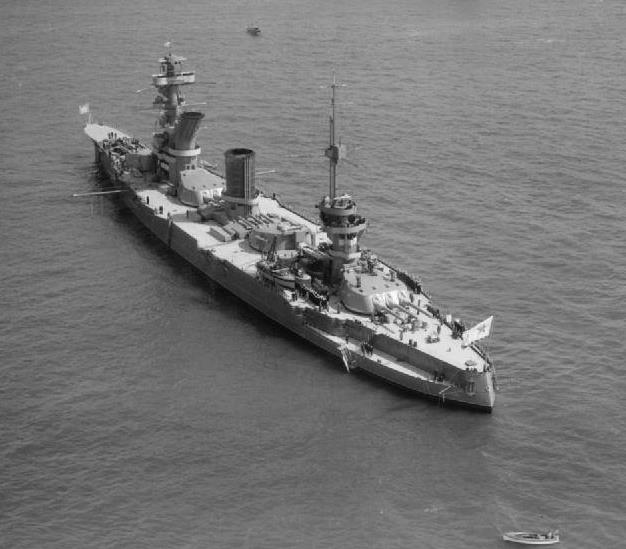
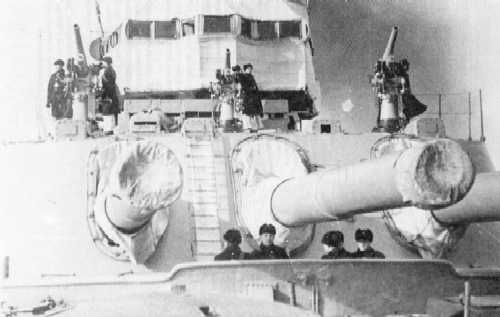
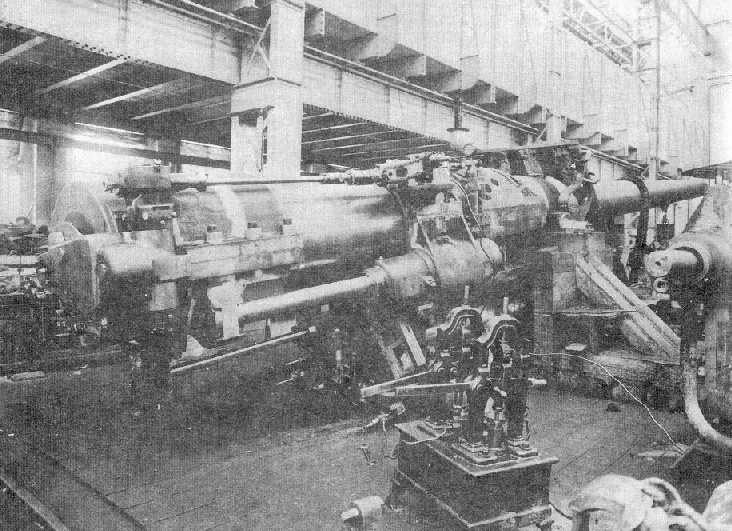


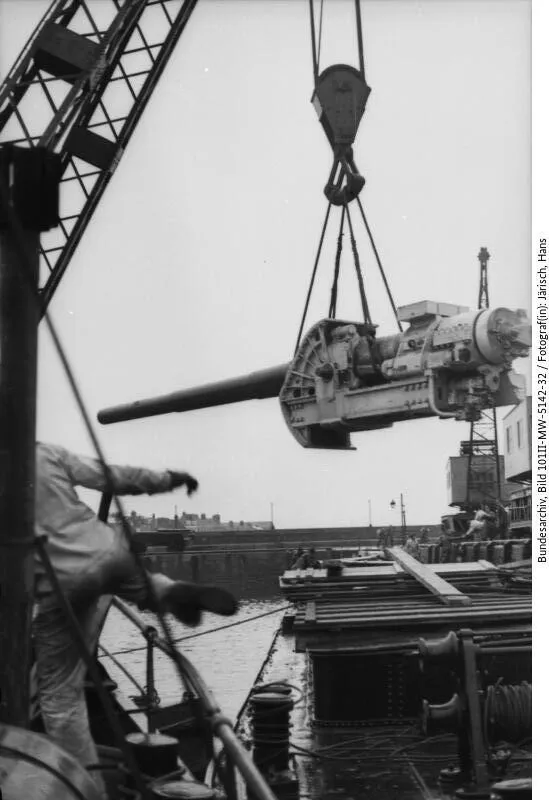

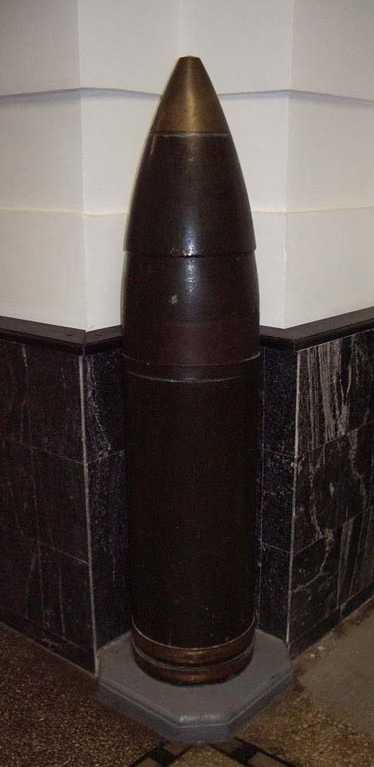
Naval Weapons of World War Two" by John Campbell
"Sovetskie Boevye Korabli 1941-45: IV Vooruzhnie" (Soviet Warships 1941-45: Volume IV Armament) by A.V. Platonov
"Glavnyi Calibr Linkorov" (Main Caliber of the Battleships) by L.I. Amirkhanov and S.I. Titushkin
"Entsiklopedia Otechestvennoi Artillerii" (Encyclopedia of Fatherland (Russian) Artillery) by A.V. Shirokorad
"The Ship that Changed the World: The Escape of the Goeben to the Dardanelles in 1914" by Dan Van Der Vat
"German Battlecruisers of World War One: Their Design, Construction and Operations" by Gary Staff
"Poslednie Ispoliny Rossiyskogo Imperatorskogo Flota" (Last Giants of the Russian Imperial Navy) by S.E. Vinogradov
---
"Flot vo Slavu Rossii" (Fleet in Honor of Russia) CD
---
Special help from Vladimir Yakubov, Mark Page and Neil Stirling
---
Tony DiGiulian's personal files
Kilta Website. Includes a good many pictures of Kuivasaaren Fort, located near Helsinki in Finland. The 305 mm/52 (12") twin coastal defense mounting at this fort has been restored to a near-operational status and has fired water blanks several times since 1992.
Northern Fortress Website: Photographs of other coastal defense weapons in Finland and Russia
"German Warships 1815-1945: Volume One" by Erich Gröner
"Mirus - The making of a Battery" by Colin Partridge and John Wallbridge
---
The National Interest
War is Boring
Fortress Island
Island Fortress - Batterie Mirus
---
"Anlage zur Übersicht über die für die Marinegeschütze und deren Abk K zu verwendende Munition und ihre Einzelteile einschließlich Salut-
und Manöverladungen.- Munition für die Geschütze des Auslandes" M.Dv. Nr. 198 by Oberkommando der Kriegsmarine
15 May 2008 - Benchmark
10 January 2010 - Added link to Northern Fortress Website
16 January 2014 - Added photograph of Marat
15 September 2016 - Converted to HTML 5 format
30 April 2020 - Reorganized notes, redid account of action of 8 January 1916
30 September 2020 - Corrected breadcrumb link
01 June 2021 - Added pdf for Coastal Artillery
31 December 2022 - Add comments regarding Nina guns and changed links to point to Wayback Archives
14 May 2023 - Corrected typographical error
02 July 2024 - Added details for guns captured by the Germans
27 January 2025 - Added comment about German projectiles given a "K 14" suffix, added note about the German propellant charges and redid history of the Batterie Mirus guns

